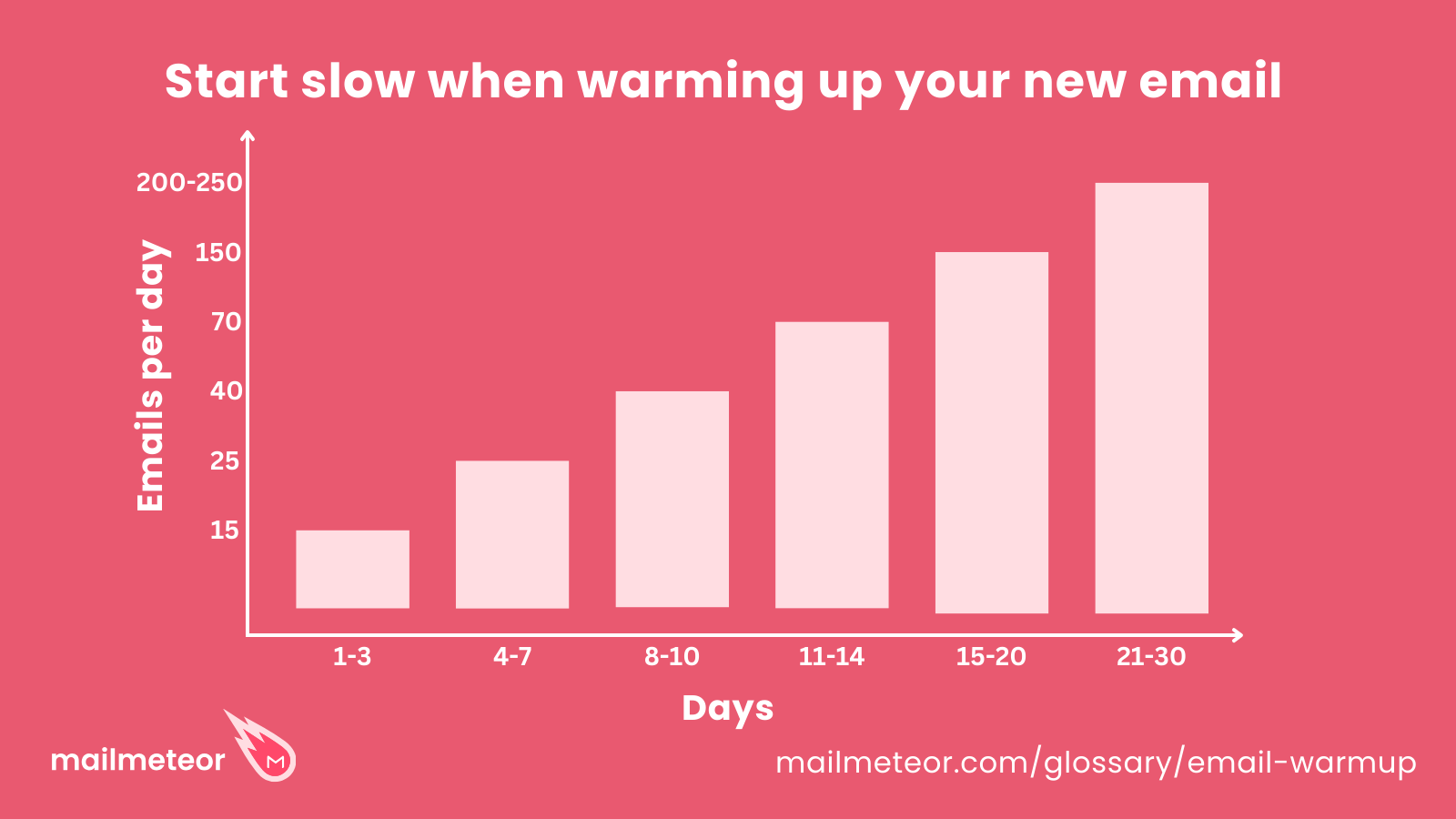What Is Email Warmup?
Email warm-up is the process of gradually increasing email volume from a new email address or domain to build a positive sender reputation. This improves email deliverability and reduces the risk of emails being flagged as spam.
You might be thinking:
“I’ve had my email for years—do I still need to warm it up?”
Firstly, if you’re sending cold outreach, you don’t want to use your main domain. Why? Because if it gets flagged for spam, your entire domain’s reputation takes a hit—and that’s hard to recover from.
Even if you’re using a separate email for outreach, warming it up is still critical.
Start slow—send a few emails per day, then gradually increase volume while simulating positive engagement (like opens and replies) to build your sender reputation.
- Why is Email Warmup Important?
- How Email Warmup Works
- Common Questions With Email Warmup
- Important: Email Warmup Is Just One Piece of the Puzzle
Why is Email Warmup Important?
When you send emails from a brand-new email address or domain, email providers don’t trust it yet. To them, it’s an unknown sender—and unknown senders often get flagged as spam.
If your emails start landing in spam, it hurts your reputation. Left unchecked, it can permanently impact deliverability or even lead to your email being blocked entirely.
Skipping warmup can result in:
- Emails going straight to spam
- Lower deliverability rates
- Your domain being flagged as untrustworthy for good
That’s why it’s critical to start slow, build trust, and gradually increase your sending volume.
How Email Warmup Works
Email warmup is exactly what it sounds like—it’s about slowly increasing the number of emails you send per day from a new inbox.
But here’s the thing: it’s not just about sending more emails over time—it’s about sending the right signals to email providers.
To do that, you need to:
- Get replies to your emails.
- Ensure your emails look like real conversations.
- Avoid sending large email blasts from day one.
- Mark emails as important or not spam when possible.
Basically—act like a human (which, if you’re not a spammer, shouldn’t be hard).
Example Email Warmup Cadence:

Manual vs. Automated Warmup
You can warm up manually (by sending small batches yourself), or automate the process using tools that simulate engagement.
Advanced cold outreach strategies often involve setting up multiple inboxes (e.g., Gmail and Outlook) on new domains to maximize sending limits.
Each inbox should be warmed up separately to build its own sender reputation. Skipping warmup on any inbox can result in lower deliverability and spam filtering issues.
Some simulate human activity by creating human-like conversations between their users’ emails, while others rely on more robotic methods, so make sure you’re using a good tool.
Important: Email Warmup Is Just One Piece of the Puzzle…
Email warmup is a critical part of maximizing your email deliverability so your campaigns have the best chance of winning you new business, but it’s just one piece of the puzzle.
If you want to maximize deliverability, you also need to do the following:
- Authenticate Your Domain – Set up DKIM, SPF, and DMARC to prove your emails are legit.
- Monitor Engagement Metrics – Track open rates, bounce rates, and spam complaints.
- Keep Your Email List Clean – Remove unverified or inactive contacts to avoid bounces.
- Avoid Spam Triggers – Certain words, too many links, or weird formatting can flag your emails.
- Be Consistent – Sudden spikes in volume look suspicious—grow at a steady pace.
👉 Need a full checklist? We put together a guide on email deliverability best practices to help you out.
Common Questions With Email Warmup
What does email warmup do?
Email warmup helps establish trust with email providers by gradually increasing email sending volume and engagement. This improves deliverability and prevents emails from going to spam.
Is email warmup legal?
Yes—as long as it’s done ethically and follows anti-spam laws. Avoid sending emails without permission or using shady tactics.
How do I know if my email is warmed up?
A fully warmed-up email will have:
- Consistent inbox placement (emails no longer land in spam).
- Higher open rates (people are engaging with your emails).
- Fewer spam complaints (no sudden spikes in “Mark as Spam” reports).
To know where you are with your email warm up process, it’s important to use a tool that helps you track these metrics, so you can act accordingly.
How long does email warmup take?
It typically takes 2–6 weeks, depending on:
- Your starting reputation (a fresh domain takes longer than an aged one).
- Your engagement rates (higher opens/replies speed up warmup).
- Your email provider’s sending limits.
- And how many emails you’re hoping to send.
Email warmup isn’t a one-time process—it requires ongoing monitoring. Even after initial warmup, maintaining a strong sender reputation is key.
How to warm up your email for free?
You can manually warm up an email by sending small batches of emails each day, gradually increasing the volume. Make sure to:
- Send to trusted contacts who will open and reply.
- Avoid sending bulk emails too soon.
- Authenticate your domain (SPF, DKIM, DMARC).
Want a faster way? Check out our guide on the best email warmup tools.
Read more